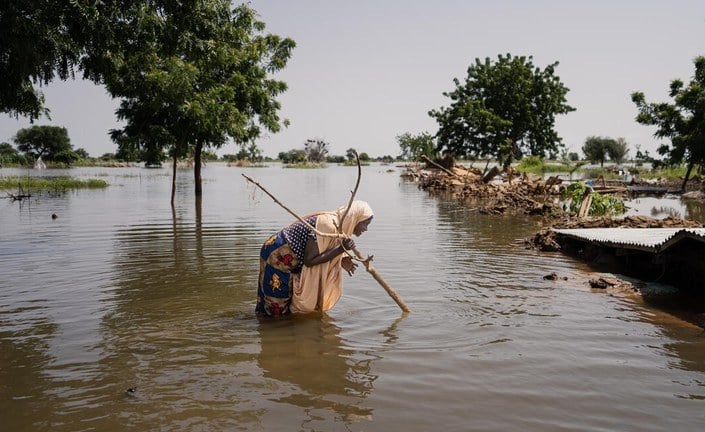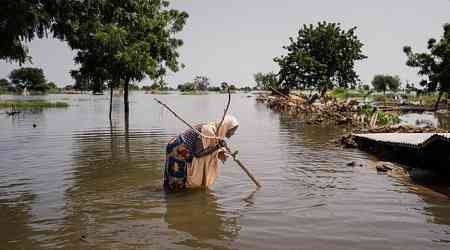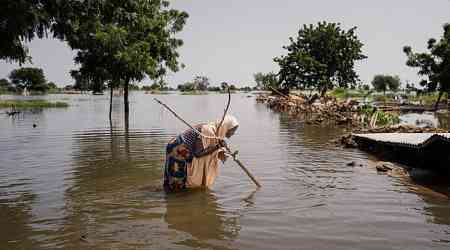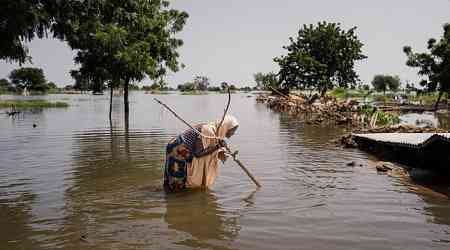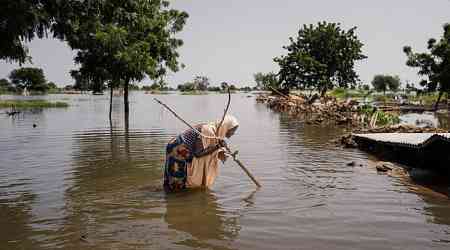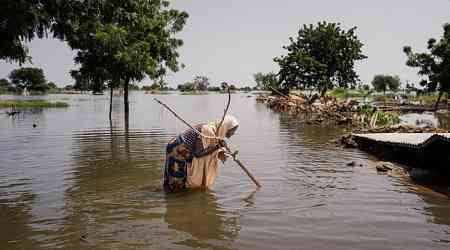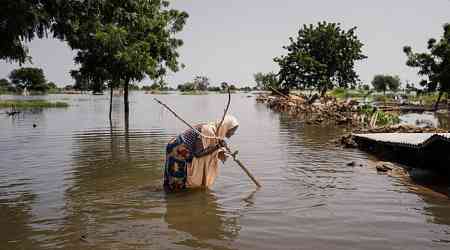Nairobi — While it may be clear from a forecast when a good time to act might be, with regards to livelihoods it is never straightforward to decide what exactly should be done.
Advances in drought prediction mean that mass human fatalities have become much rarer these days. Sophisticated early warning systems generate forecasts that enable emergency relief to be provided in enough time to save lives in most cases.
This is no small victory.
But should the same systems be doing better at stimulating interventions that go a step further, protecting people's livelihoods alongside their lives?
For many organisations and agencies operating in Africa, the answer is simple, obvious even. "Anticipatory action" is a form of aid intervention that increasingly aims to safeguard people's subsistence early enough to head off catastrophe.
In sedentary agricultural contexts there is much evidence of success. From Ethiopia to Uganda, data-triggered protocols have reduced losses and helped determine where aid will be most urgently required with a reasonable degree of accuracy.
At this week's COP29, we can expect these successes - and the potential they signify - to feature prominently in various side events and discussions.
The gathering in Baku, Azerbaijan, has been referred to as "the finance COP". It's seen by many as an opportunity to expand climate finance, grow the loss and damage fund, and get adaptation back on track.
Calls will no doubt be made for resources to be directed towards the institutionalisation of anticipatory action in various regions and countries, and its scaling-up in line with a more regular occurrence of climate change-related environmental disasters.
Kenya has recently produced an anticipatory action roadmap, which echoes the regional eight-country Intergovernmental Authority on Development's call for better coordination and financing.
Similar calls for mainstreaming anticipatory action across eastern Africa were made in a declaration that followed the first East African Dialogue Platform on Anticipatory Action, which recently took place in Mombasa, Kenya.
Mobility a missing factor
But these documents and appeals rarely meditate on the stark contrasts that exist between settled farming populations and mobile pastoralists - and the fundamental implications these differences harbour for prediction-based interventions.
Farmers tend to stay in one place. Their livelihoods may well be flexible, but they are not open-ended to the extent that they transform on a dime. In this sense, farming livelihoods align with prediction-based approaches to intervention without issue.
The same cannot be said about mobile pastoralism - the most common livelihood pursued in the drylands, which cover roughly 80% of Kenya's land area.
Much recent academic work exploring drylands pastoralism has emphasised its unique orientation towards uncertainty: its capacity for successfully managing conditions of extreme variability, spanning the environment, the economy, and the political domain.
More than other livelihoods, pastoralism is productive because of its dynamic adaptability - actively moving and reshaping itself in relation to the environment.
Patterns of mobility transform, families and herds divide and relocate, herd sizes fluctuate, economic relationships across different resource bases - including temporary cultivation - end and are then re-established amid new contexts with new technologies.
The knowledge that makes all this possible is not old-fashioned and unchanging, but rather largely based on improvisation. Case studies from across Africa provide diverse examples of how pastoralists draw on their past experiences and skills to dynamically negotiate risk, often beyond the reach of formal support or assistance.
It is arguably this distinctiveness that has made pastoralism so difficult to support through conventional approaches to anticipatory action.
'Multiple catastrophic droughts'
Despite timely warnings, the last two decades have seen multiple catastrophic droughts unfold in Africa's drylands, regularly resulting in the corrosion of livelihoods and crisis levels of hunger, due largely to the decimation of livestock herds.
Emergency assistance has been delayed and ineffective. In response, many have pointed to the need for structural improvements in early warning systems; the mainstreaming of forecast-based action; and more nimble financing for NGOs, agencies, and local governments.
All of these calls will no doubt echo through the streets of Baku in the upcoming COP meeting.
But few have questioned the approach itself, or asked whether the mechanistic triggering of predefined actions (from destocking programmes to cash and food assistance) is the most appropriate way of dealing with the kinds of complex, protracted crises that tend to emerge in the drylands during and after drought.
For most pastoralists, the idea of planning precise movements and actions months in advance is unreasonable. This is not because of some kind of cultural predisposition, but because the distribution of rain in the rangelands is always profoundly variable.
Whether a forecast says that rain will come or not, some form of movement is usually necessary in order to find adequate pasture. Such movements are often decided at the last possible moment, using a range of information, including the reports of scouts on water access and the quantity and quality of grass.
It is critical that these movements are amendable and malleable - open to dynamic re-strategising as the terrain of challenges transforms in real time.
When a drought does arise, it does so gradually, almost always intersecting with multiple other forms of crisis unravelling at different rates and scales, many of them stemming from long histories of political and economic marginalisation.
In short, while it may be clear from a forecast when a good time to act might be, with regards to livelihoods it is never straightforward to decide what exactly should be done.
Time for a rethink
Pre-defined anticipatory action protocols are outpaced by fastmoving, unpredictable conditions: by the requirement to move, or to adopt different forms of subsistence over the short term - from fishing, to cultivation, to business and wage labour.
In the drylands, an approach to emergency support that is unable to dynamically transform - in terms of both its scope, its location, and its broader structure - is almost always bound for limited success.
Despite the promise of dignity and local relevance, direct cash transfer programmes - now one of the most favoured modes of emergency assistance across Africa's drylands - have so far not proven to be the silver bullet for effective anticipatory action in any straightforward sense.
This is partly because of their very limited scale. Cash programmes tend to comprise a small monthly payment to a limited number of individuals deemed to be the most vulnerable. That money is often then subsequently redeployed to address community-wide issues as much as it is used to cater to individual needs.
Such programmes, as well as hastily constructed wells and boreholes, often compel the formation of new semi-permanent settlements in locations otherwise unsuitable for permanent occupation, thus undermining pastoralists' longer term resilience.
If anticipatory actions are to improve their impact in pastoralist settings, they must find ways of better orienting themselves around existing community level drought mitigation strategies.
This kind of localisation is easier said than done, considering the centralisation in decision-making that seems to have characterised early warning systems over recent years. Highly technical data syntheses and "action trigger" designs are now par for the course.
While many anticipatory action plans claim to be participatory or even "co-designed", there is a need for early action to engage more seriously with local relationships, customary institutions, and practices.
Anticipatory action should be reconfigured to serve less as an exact and precise solution, and more as a timely dedication of support to the parts of existing systems that most require it, such as informal veterinary medicine distributors, motorbike ambulances, shopkeepers who provide interest free loans, or even local entrepreneurs who provide market access in hard-to-reach locations.
Such unheeded work, rendered informally and often with little or no recompense, is what really allows pastoralists to navigate the crisis of drought.


















